Shiprock
Introduction
Text-to-speech Audio
Images
The Legendary Shiprock
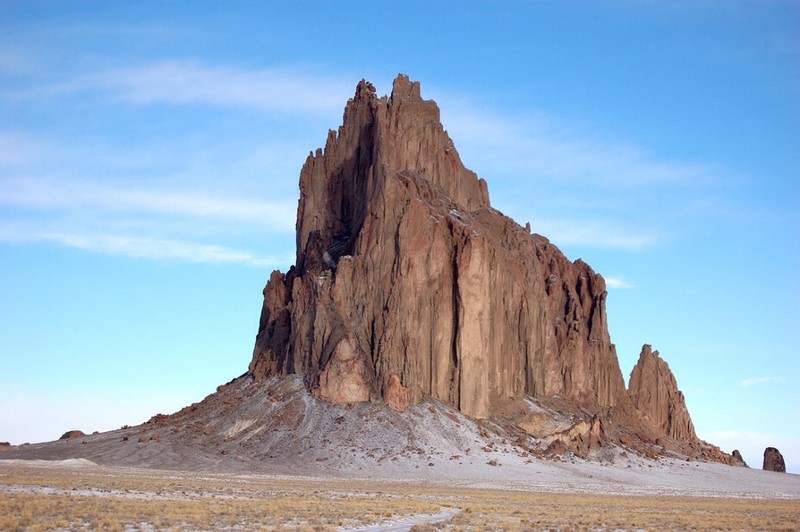
Shadow Profile of Shiprock
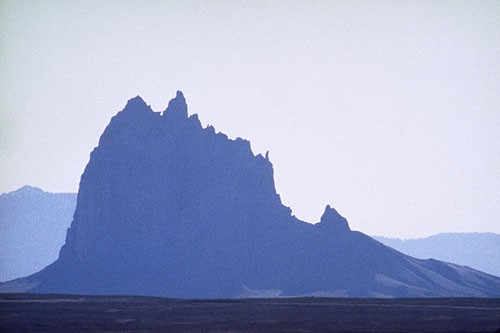
Sunset View of Shiprock
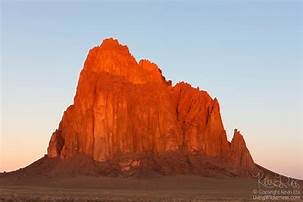
Aerial View of Shiprock

Satellite View of Shiprock
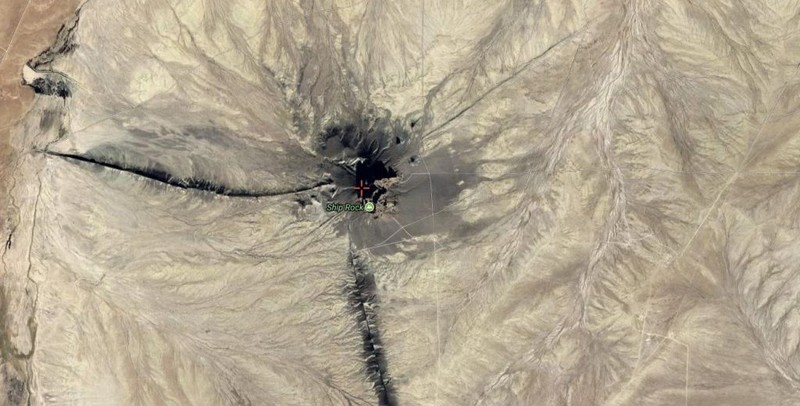
Map of Shiprock, New Mexico

Stamped: Shiprock on a 1962 Postage Stamp
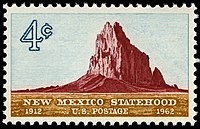
Backstory and Context
Text-to-speech Audio
Shiprock was formed approximately formed 27 million years ago. The rock formation is a monadnock, which is an isolated hill, ridge, or a small mountain that emerges from a slightly sloped or leveled plain. Shiprock's height is around 1,500 ft., and it is mostly composed of fragmented volcanic rock, such as breccia and Black dike of ingenious rock called minnette. Shiprock is the remnant of the throat of a volcano that has eroded away. The rock formation is found near an old Navajo Reservation in Shiprock, New Mexico.
Shiprock is also called "Tsé Bit A'í," which is Navajo for "rock with wings" or "winged rock," According to the Navajo legend, the rock formation was once a giant bird that would carry people from the indigenous Navajo tribe known as the Anasazi on its back. Legend says that the bird would return to where Shiprock is today at sundown, and it would return to stone. Stories passed down from generation to generation say that ancient Navajo settled on the rock's peak, and they would only come from the peak to plant their fields and fetch water. However, one day, a massive lighting storm struck Shiprock, which caused great suffering and destruction. The legend says that the destruction caused by the storm left Navajo women and children to be stranded at the peak. Since the storm, the rock formation has been forbidden to people as the Navajo elders believe that visitors could potentially disturb the restless spirits that lost their lives because of the storm. The elders have said that the spirits continue to haunt the land to this day. According to Navajo tradition, the Shiprock formation is in the Four Corners region and plays a significant role in Navajo religion, myth, and culture.
Shiprock later received its name from colonists in the area who thought the formation's peak resembled the enormous 19th-century clipper ship with the same name. Before that, the formation was called "The Needle," and it was coined by Captain J. F. McComb in 1860. Around the late 1960s and early 1970s, the Navajo Nation placed an absolute ban to climb or vandalize the rock formation due to the fear of potential climbers getting injured or fatally wounded. This ban was a response to the death of a rock climber that was scaling Shiprock. Also, the Navajo Nation did want trespassers to disturb the sacred grounds and cause a disturbance with the spirits that still roam around the rock formation. Shiprock is under strict observation with the Navajo tribal police and several Navajo organization chapters. In 1975, Shiprock was designated as a National Natural Landmark by National Park Services. Visitors can still come to Shiprock and witness its natural beauty along with the majestic land surrounding it. Shiprock is a sought-after site for photographers, and the formation has been featured in artwork, television, film, and even literature.
Sources
Friedman, Janice. "The Mysteries And Legends Of Shiprock," The Sacred Peak Of The Navajo People, Ancient Code. n.d. Accessed August 2nd 2020. https://www.ancient-code.com/the-mysteries-and-legends-of-shiprock-the-sacred-peak-of-the-navajo-people/.
Russell, Johanna. "The Legend of Shiprock," New Mexi.co. n.d. Accessed August 2nd 2020. https://newmexi.co/destinations/the-legend-of-shiprock/.
https://en.wikipedia.org/wiki/Shiprock#/media/File:Shiprock.snodgrass3.jpg
https://sacredsites.com/americas/united_states/shiprock.html
https://ssl.c.photoshelter.com/img-get2/I0000t7bsjw3nfH0/fit=1000x750/NM-Shiprock-Sunrise-1589.jpg
https://en.wikipedia.org/wiki/Shiprock
https://www.ancient-code.com/the-mysteries-and-legends-of-shiprock-the-sacred-peak-of-the-navajo-people/
https://en.wikipedia.org/wiki/San_Juan_County,_New_Mexico
https://en.wikipedia.org/wiki/Shiprock
